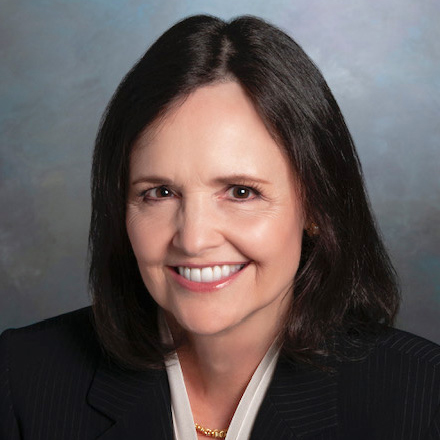In the Woody Allen film “Annie Hall,” the main character tries to explain irrational relationships by recounting an old joke. “This guy goes to a psychiatrist and says, ‘My brother’s crazy, he thinks he’s a chicken.’ The doctor says, ‘Well, why don’t you turn him in?’ And the guy says, ‘I would, but I need the eggs.’”
It takes similar reasoning to reconcile the elation felt across America every time the stock market rises—partially replenishing personal investment portfolios and 401(k) retirement plans—with the uneasy feeling that we are being set up for yet another big financial disappointment. We dare to hope that the economy is growing solidly once more, that the Federal Reserve has superior knowledge about providing liquidity, and that the U.S. Treasury knows what it’s doing by guaranteeing money market-fund assets.
But what if the Fed’s efforts to stoke a recovery are merely creating asset bubbles in equities and elsewhere? What if government guarantees—explicit and implicit—are encouraging high-risk investment behavior rather than restoring conditions for normal market returns? What if excess dollars produced here are being channeled by speculators into foreign stock and bond markets as part of a currency play?
The Fed’s decision last week to keep pumping out money at near-zero interest rates is worrisome. In its statement, the Federal Open Market Committee (FOMC) notes that “low rates of resource utilization” are the main justification for continuing to make funds available to banks at “exceptionally low levels of the federal funds rate for an extended period”—by which it means that banks can continue to borrow at 0%-0.25% and then lend the money out to borrowers seeking to earn much higher returns. The FOMC cites “subdued inflation trends” and “stable inflation expectations” as reassuring evidence that money is not being created in excess.
Meanwhile, the Labor Department’s announcement last Friday that unemployment surpassed 10% certainly testifies to “low rates of resource utilization,” i.e., the considerable slack in the economy. From the Fed’s point of view, the nearly 16 million people who can’t find jobs represent the “output gap” between actual and potential gross domestic product. If everyone were gainfully employed, so the reasoning goes, there would be pressure on employers to raise wages and the increased cost would be reflected as inflation. Since core inflation is running low—1.5% as measured by the consumer price index, 1.3% as measured by personal consumption expenditures (the price index preferred by the Fed)—it follows that money can be manufactured with impunity for the foreseeable future.
But wait a minute. If unemployment is high, doesn’t that indicate a surplus of labor relative to the demand for labor? Wouldn’t that cause the price of labor to come down? If you throw in the fact that industrial capacity utilization, at 70%, is lower now than during any prior recession since the Fed began tracking it in 1967, and that the housing vacancy rate is nearly 11%, you begin to wonder why the price level should nevertheless continue to rise, even by a little bit, every month.
“With substantial resource slack likely to continue to dampen cost pressures,” as the FOMC statement so convincingly affirms, it hardly makes sense that “subdued” inflation should provide comfort. Why should there be any inflation at all?
Maintaining stable prices, after all, is one of the Fed’s primary missions. The notion of price stability over time suggests that when the economy is going through a deep recession, the level of prices might reasonably be expected to come down.
Deflation is seen as the bugaboo of Keynesian economics. But it can actually serve to spur economic activity as lower prices enable struggling consumers to get back in the game, and enterprising individuals can build businesses using tangible assets that yield valid profits.
But the Fed seems to think that prices should only go in one direction—up—no matter the circumstances. It’s this bias toward inflation that is revealed by the FOMC’s reference to “stable inflation expectations”—which is less a paean to price stability than an inadvertent oxymoron.
The Fed’s asymmetrical thinking extends as well to its treatment of financial assets—such as equity and debt instruments—en route to a bubble. As prices surge and markets soar, the Fed is reluctant to raise interest rates lest it be accused of hindering growth. But when the bubble bursts and asset prices begin to tumble, the Fed quickly steps in with dramatic interest rate reductions to “restore investor confidence” in hopes of avoiding a meltdown.
In the last eight months, the Dow Jones Industrial Average has risen from its March 6 low of 6470 to over 10290 today, a gain of roughly 59%. The Nasdaq Composite Index and the S&P 500 Index have likewise increased about 71% and 65%, respectively, since early March. Are we looking at the restoration of legitimate values or the emergence of disastrous new asset price bubbles?
The answer would seem to lie in whether the Fed’s money machine is fueling an illusory recovery that is only manifested in financial markets as opposed to the general economy. The FOMC’s own report acknowledges that economic activity remains weak, household spending is constrained, and businesses are still cutting back on fixed investment and staffing.
Indeed, the Fed insists that “tight credit” conditions still persist; doubtless, there are many small business owners who could attest to that reality. But looking at the huge increase in financial asset prices across broad indices—not just in America, but globally—you would never guess that monetary policy could be anything but loose.
Now here’s the scary part: Even though more than half of all American households now own equities directly or through mutual funds, an increase in equity prices does not figure into the Fed’s calculation of inflation. So while measures of core inflation (which exclude food and energy) carefully register minute gains in the price of a fixed basket of goods and services meant to reflect what a typical family buys to achieve a minimum standard of living, they ignore massive price surges in what has effectively become a widely held consumer good: stocks.
Moreover, the Fed’s inflation-targeting approach overlooks price increases for real estate and rising commodity prices. Don’t even mention gold, which has gone from $707 to $1,114 since a year ago.
Even if the Fed seems blithely unaware of the havoc it may be wreaking through its irrationally loose monetary policy, in tandem with the distortions of moral hazard inflicted by intrusive government, Americans seem willing to accept the insanity of boom-and-bust cycles. Sure, we could be facing the latest Fed-induced bubble—but so what?
We need the eggs.









